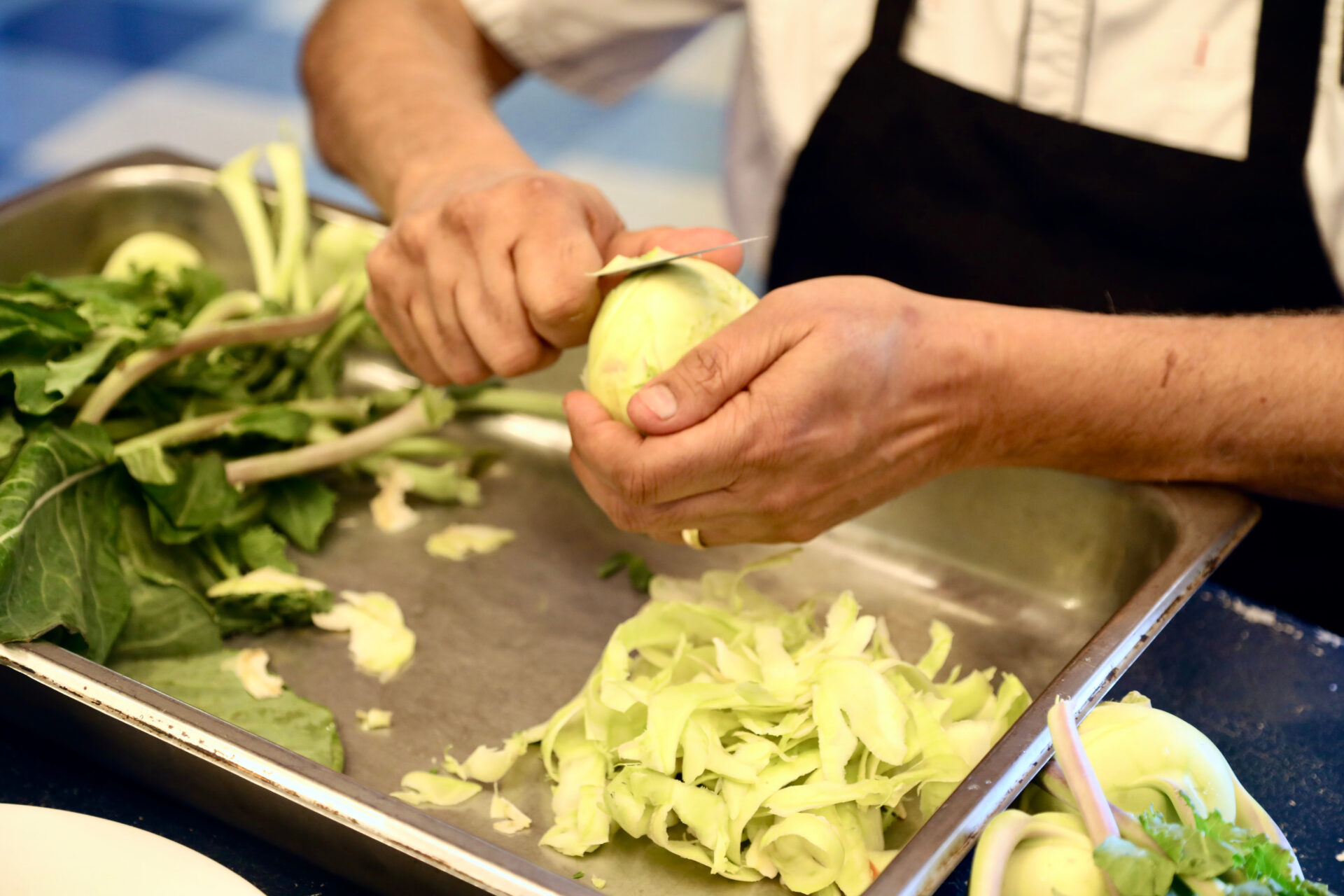
That slightly curved cucumber, the apple with a tiny blemish, the carrot with two legs… what if we told you these are the real kitchen superstars? We’ve been conditioned to believe that perfect-looking food is the only good food. But honestly, that’s a recipe for waste.
Let’s dive into the wonderfully wobbly world of zero-waste cooking with imperfect produce. It’s not just about being thrifty—it’s a creative, rewarding way to cook that’s kinder to your wallet and the environment. Here’s the deal: you can make incredible meals while fighting food waste at its source.
Why “Ugly” Produce Deserves a Spot in Your Kitchen
First things first, let’s squash the main misconception. Imperfect produce—often called “ugly” fruits and veggies—is just as nutritious and delicious as its cosmetically perfect counterparts. In fact, sometimes a little scar or a weird shape is a sign of more flavor.
The scale of the problem is staggering. A huge amount of perfectly edible food never even leaves the farm because it doesn’t meet arbitrary grocery store beauty standards. By choosing these misfits, you’re voting with your wallet for a less wasteful system. You’re also, almost certainly, saving a good chunk of change. Imperfect produce is often sold at a significant discount.
The Zero-Waste Kitchen Mindset: It’s All About Potential
Adopting a zero-waste cooking approach means seeing potential where others see waste. That bunch of limp celery in the back of the fridge? Don’t toss it. It’s a flavor bomb waiting for a stock pot. Stale bread? That’s your next batch of breadcrumbs or a killer bread pudding.
This mindset shift is the most important tool in your arsenal. It turns cooking from a precise science following a rigid recipe into a flexible, creative art form. You start asking, “What can I make with what I have?” instead of “What do I need to buy?”
Where to Find Your New Favorite Ingredients
So, where do you find these culinary treasures? Well, they’re everywhere if you know where to look.
- Farmers’ Markets: Farmers here are usually thrilled to sell you their less-than-perfect items at a lower price. You can often find a “seconds” bin.
- Subscription Boxes & Online Retailers: Services like Misfits Market or Imperfect Foods have built entire businesses on delivering ugly produce directly to your door.
- Local Farms: Some farms offer CSA (Community Supported Agriculture) boxes, which frequently include a beautiful, chaotic mix of whatever is harvested that week, quirks and all.
- Your Own Grocery Store: Keep an eye out for discounted racks or simply be brave and pick up that pepper with a funny shape that everyone else passed over.
Your Action Plan: From Scraps to Scrumptious
Okay, you’ve got your haul of wonderfully weird produce. Now what? Here’s a practical guide to making the most of every last bit.
Embrace the Chop and Sizzle
For fruits and veggies with minor bruises or soft spots, a little knife work is all you need. Simply cut away the damaged part. The rest is perfectly fine. Those chopped pieces are destined for greatness in:
- Stir-fries and Curries: Dice everything up. The vibrant mix of colors and textures is the whole point.
- Soups and Stews: A simmering pot is the ultimate destination for imperfect produce. Everything softens, melds, and becomes delicious.
- Sauces and Salsas: Tomatoes with blemishes? Perfect for a rich marinara. Oddly shaped onions and peppers? They’re salsa waiting to happen.
The Power of Preservation
When you have a glut of produce—imperfect or not—preservation is your best friend. It’s the cornerstone of a zero-waste kitchen.
| Method | Best For | Zero-Waste Pro Tip |
| Freezing | Berries, chopped peppers, herbs (in oil), overripe bananas (peeled!). | Freeze citrus peels to blend into dressings or grate over dishes later. |
| Pickling & Fermenting | Carrots, cucumbers, onions, green beans, cabbage. | Use the brine from pickle jars to make a tangy salad dressing or marinade. |
| Dehydrating | Apple slices, tomato halves, fresh herbs. | Make vegetable powder from dehydrated kale stems or mushroom bits for an umami boost. |
| Making Jams & Chutneys | Stone fruits, pears, apples, tomatoes with any minor flaws. | Simmer fruit peels (like apple or pear) with sugar and water to make a simple syrup for cocktails. |
Don’t You Dare Toss Those Scraps!
This is where the real magic happens. The parts you normally throw away are packed with flavor and nutrients.
Homemade Vegetable Scrap Stock: This is a game-changer. Keep a gallon bag in your freezer. Toss in onion skins, carrot peels, celery ends, mushroom stems, herb stalks—you name it. When the bag is full, simmer the contents with water for an hour or two. Strain, and you have the most flavorful, free stock imaginable. It puts store-bought broth to shame, you know?
Crispy Treats from Peels and Stems: Toss potato or carrot peels with a little oil and salt, then bake until crispy. Sauté broccoli stems or kale ribs until tender. They’ve got a great crunch.
Herb Stem Pesto: Don’t just use the leaves! The stems of cilantro, parsley, or basil are incredibly fragrant. Blend them right into your pesto for an extra flavor punch.
A Simple Recipe to Get You Started: “Everything-But-The-Sink” Veggie Scrap Fritters
This isn’t so much a recipe as a formula. It’s forgiving, flexible, and a perfect way to use up a random assortment of veggies.
Grate or finely chop about 2 cups of mixed vegetables. Think: zucchini, carrots, potatoes, onions, even those lonely bits of bell pepper or corn. Squeeze out the excess moisture in a clean kitchen towel—this is the secret to crispy fritters.
Mix in one egg, a quarter cup of flour (any kind), a handful of cheese, and your favorite herbs and spices. Season well. Heat a slick of oil in a pan and drop spoonfuls of the mixture, flattening them into patties. Fry for a few minutes on each side until golden brown and cooked through.
Serve with a dollop of yogurt or applesauce. Honestly, it’s that easy. You’ve just transformed scraps into a delicious, satisfying meal.
The Ripple Effect of Your Choices
Choosing imperfect produce and committing to zero-waste cooking isn’t a small, insignificant act. It’s a quiet rebellion against a system of waste. It connects you more deeply to your food—where it comes from, the effort it takes to grow, and its true value beyond a shiny exterior.
You’ll find yourself getting more creative in the kitchen, feeling a sense of accomplishment from a meal made with nothing wasted, and knowing that your choices are part of a bigger, more sustainable picture. That slightly crooked carrot? It’s not just a carrot anymore. It’s a statement.







